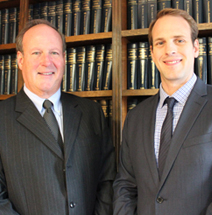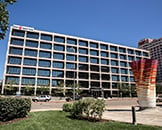Personal Injury Claims: Negligence
Negligence is a large part of any personal injury claim. If you have been injured and have an action for compensation for the injuries you have suffered, you will, usually have a negligence claim. To prove the defendant was negligent and legally responsible for your injuries, you will have to prove to the court that the facts of your case support the elements of negligence. The elements of negligence are as follows:
- The defendant (person or persons you are suing) owed the injured party a duty of care to protect against an unreasonable risk of harm
- The defendant breached this legal duty
- As a result of this breach, the plaintiff suffered injury (the defendants action or inaction caused the plaintiff’s injury, either directly or indirectly)
- The plaintiff suffered actual injury and loss
The plaintiff has the burden of proving the elements of negligence to the court to support a claim for personal injury. Also, when providing evidence to establish these claims, the injured party must be able to give the court (judge or jury) information regarding damages. This helps the court determine the amount of compensation that the plaintiff may be awarded.
Limits on Compensation
If you are partially responsible for your injuries, this may affect the amount of compensation you may be awarded by the court for your losses. The amount that you may receive depends on the jurisdiction you are in and the circumstances of your case. Some states follow the rule of contributory negligence. According to this rule, if the injured party is even partly responsible for her or her injuries, recovery may not be possible (in many cases). However, this rule is used in a minority of state. Alternatively, most states follow the rule of comparative negligence. Under this rule, if the injured party is partially responsible for his or her own injuries, damages may still be awarded. Though the amount of damages the injured party receives will depend on the degree of responsibility. The total amount of loss (damages) will be reduced according to the extent of the injured party’s own negligence.
Likewise, possible recovery for injuries may be reduced if the injured party has a preexisting medical condition. If the injuries caused by the accident are related to the preexisting condition, recovery may not be possible. However, if injuries were caused by the incident and not the preexisting medical condition, recovery may be possible. An individual may also be able to recover damages if a preexisting condition was worsened or aggravated by the accident. The legal treatment of preexisting conditions and possible legal claims may differ depending on your jurisdiction. If you have suffered a personal injury and may be partially to blame for your injuries or already have a preexisting medical condition, it is important to speak to a personal injury attorney in your area to learn about the law in your state, your legal rights and your legal options.
Preparing to Meet with Your Personal Injury Attorney
To read and print out a copy of the checklist, please follow the link below.
Preparing to Meet with your Personal Injury Attorney
You can download a free copy of Adobe Acrobat Reader here.
Copyright © 1994-2011 FindLaw, a Thomson Reuters business
DISCLAIMER: This site and any information contained herein are intended for informational purposes only and should not be construed as legal advice. Seek competent counsel for advice on any legal matter.







